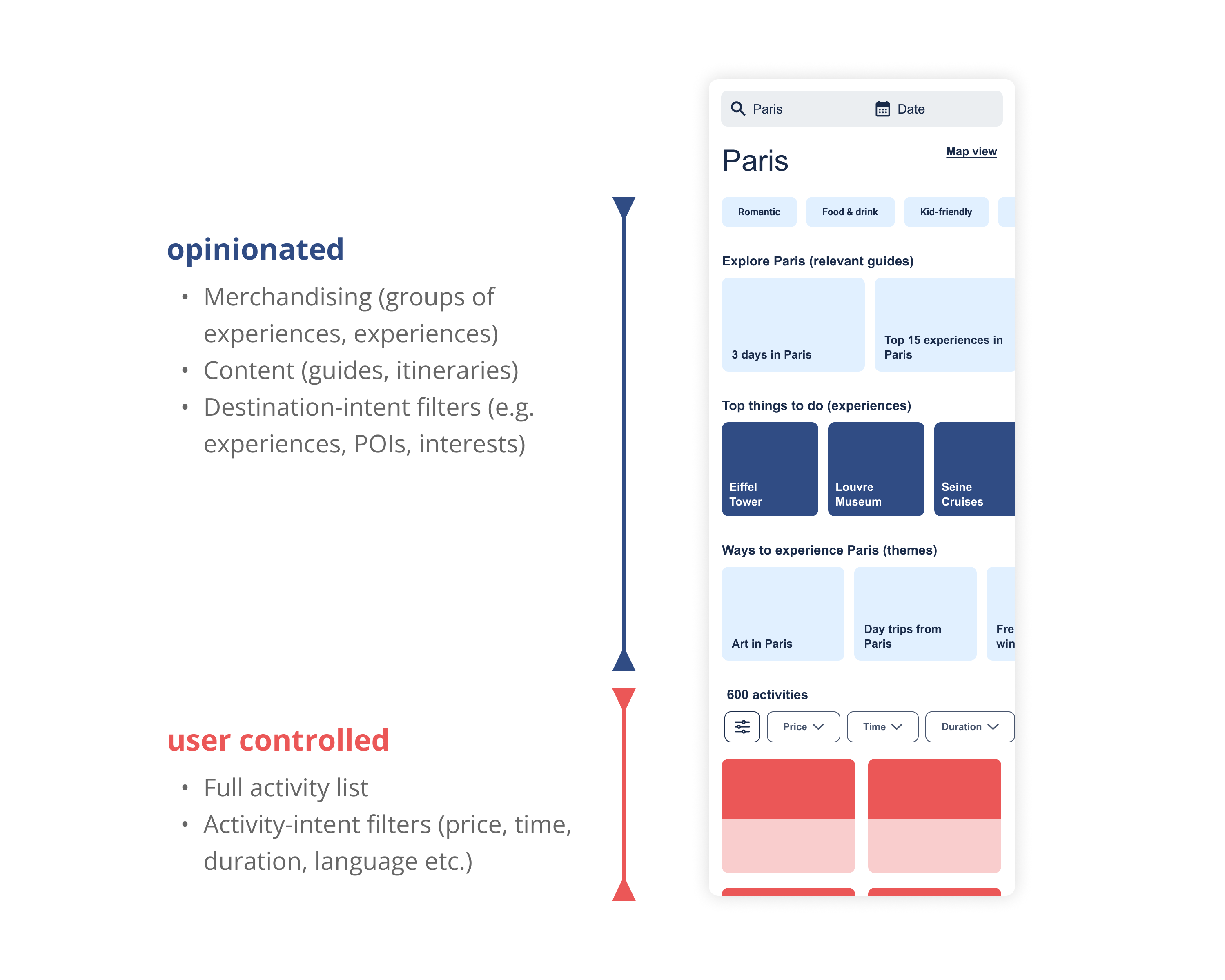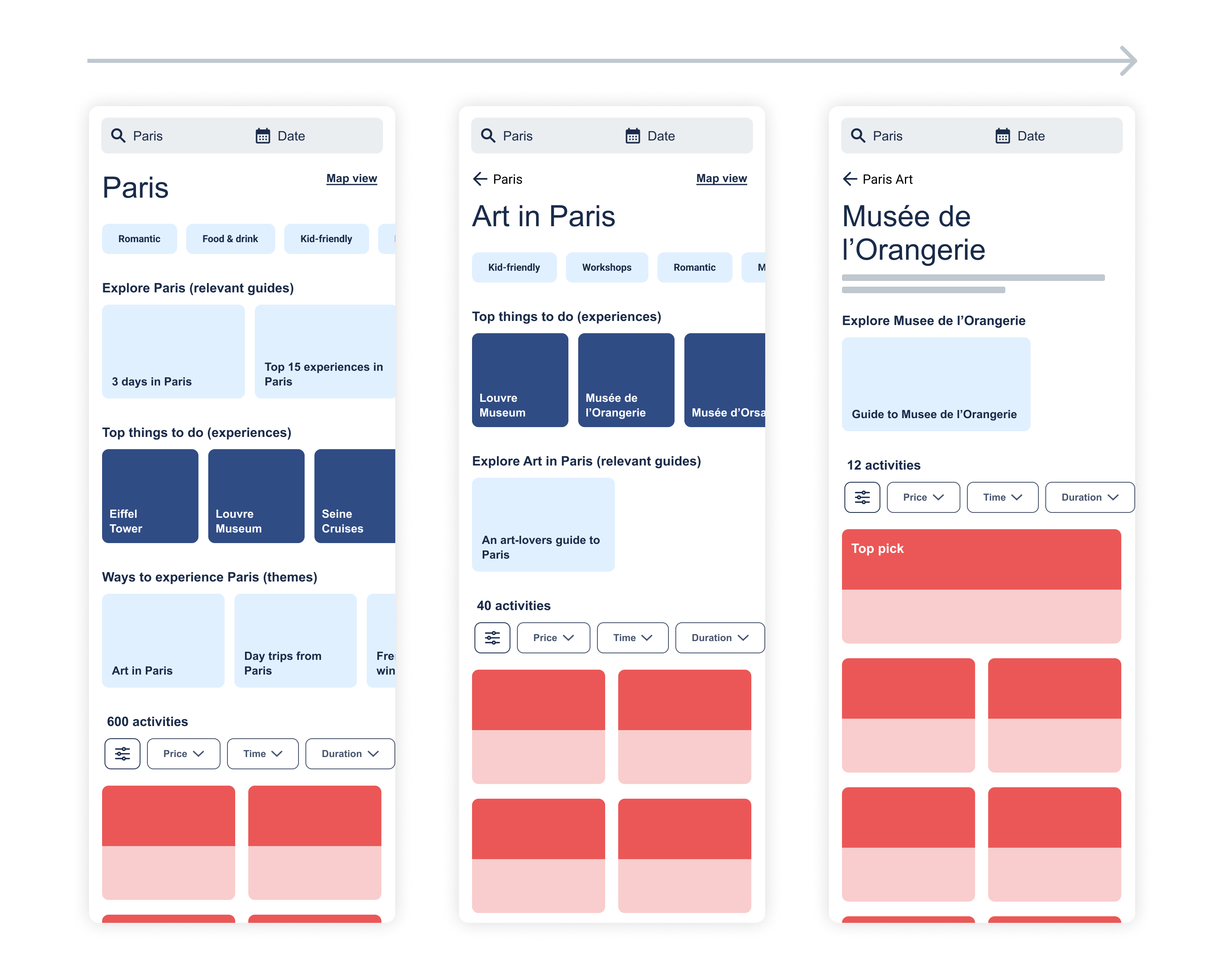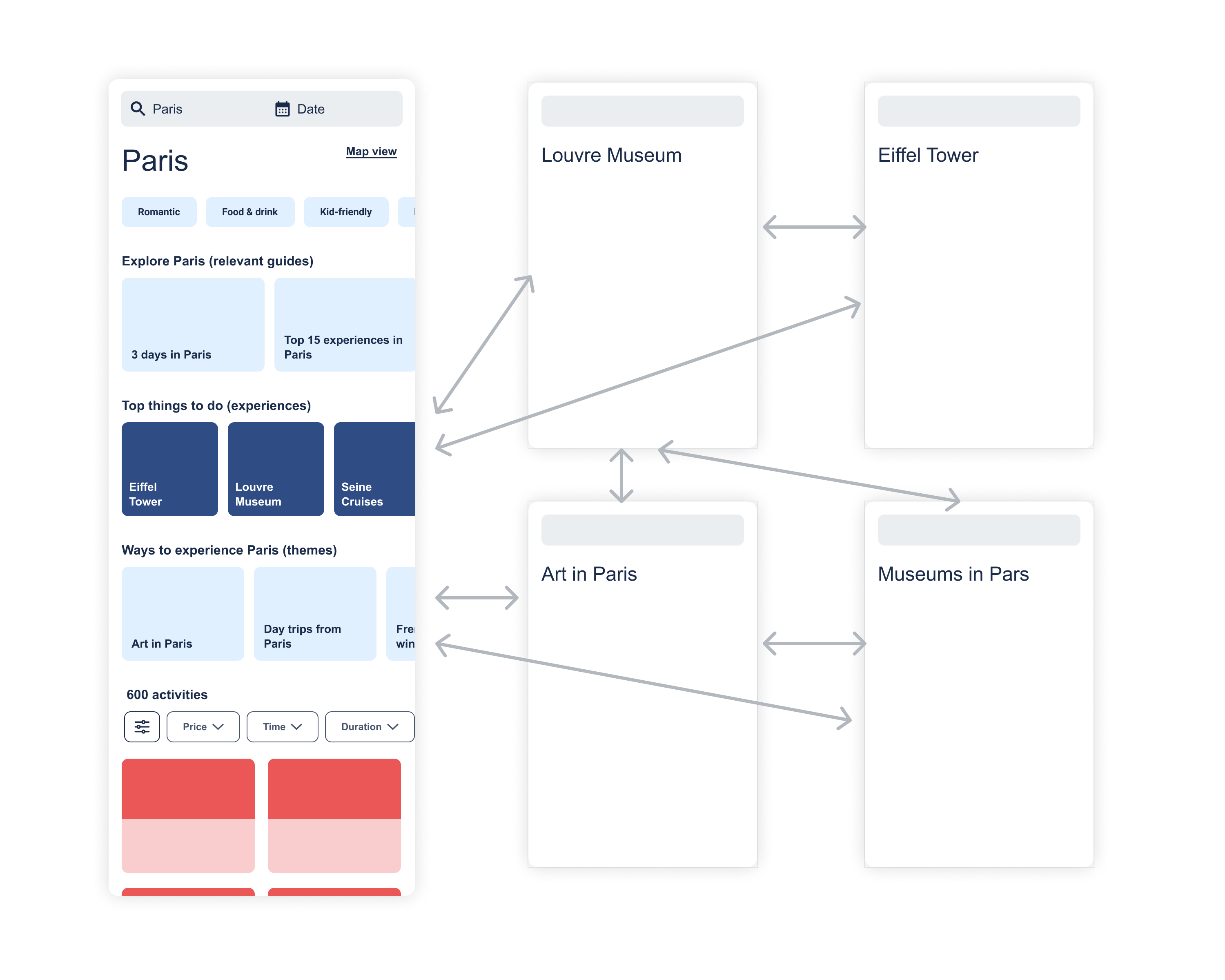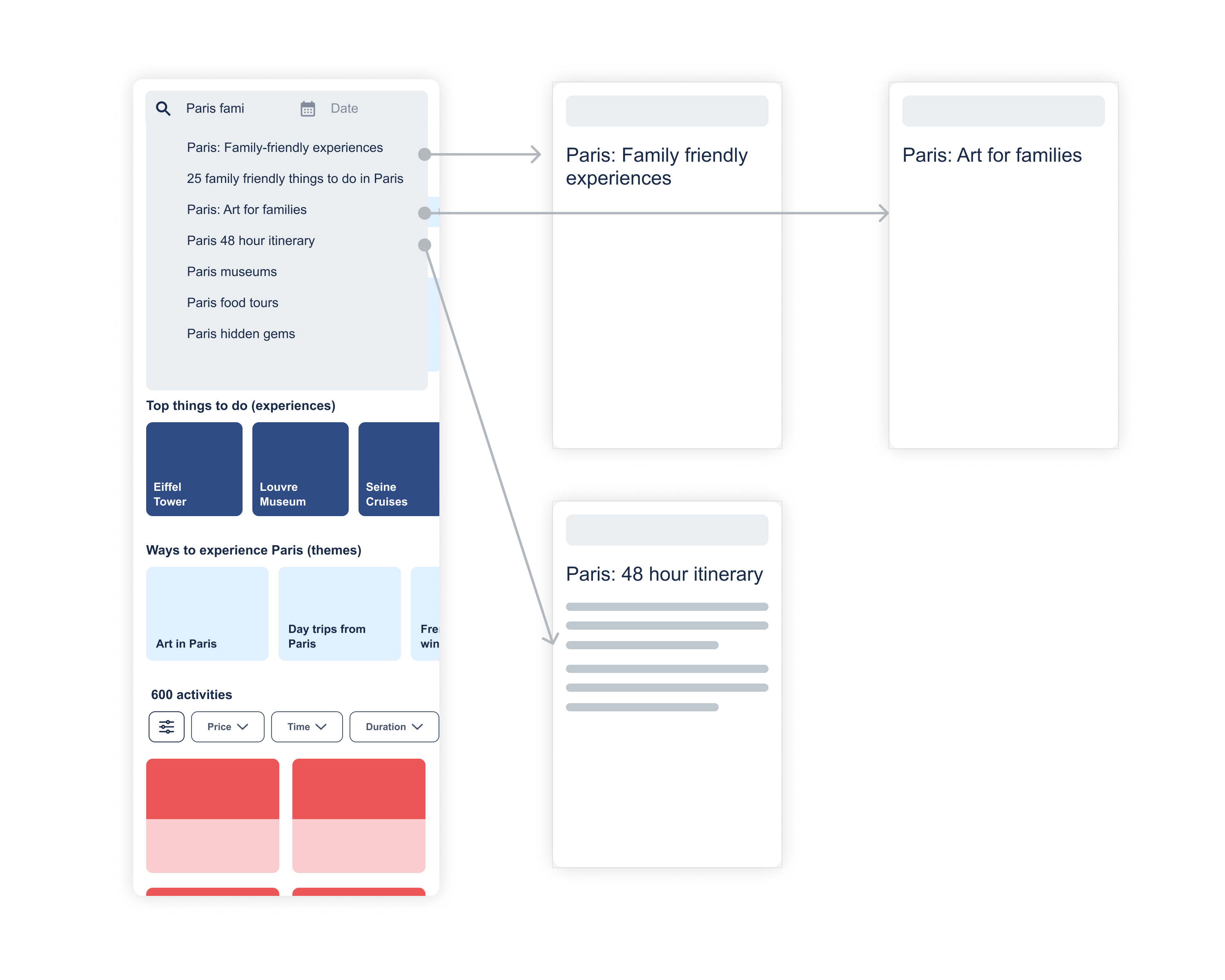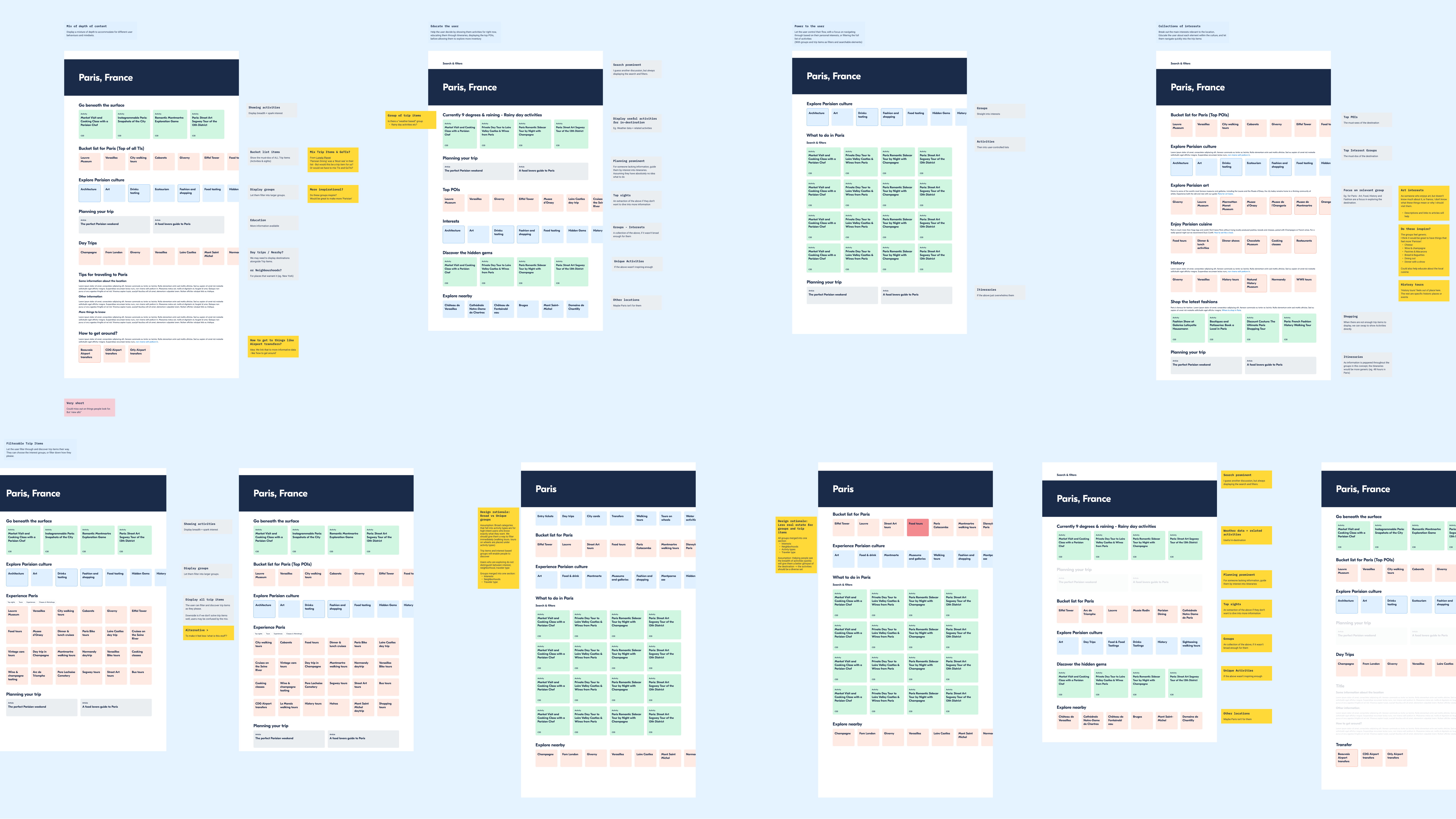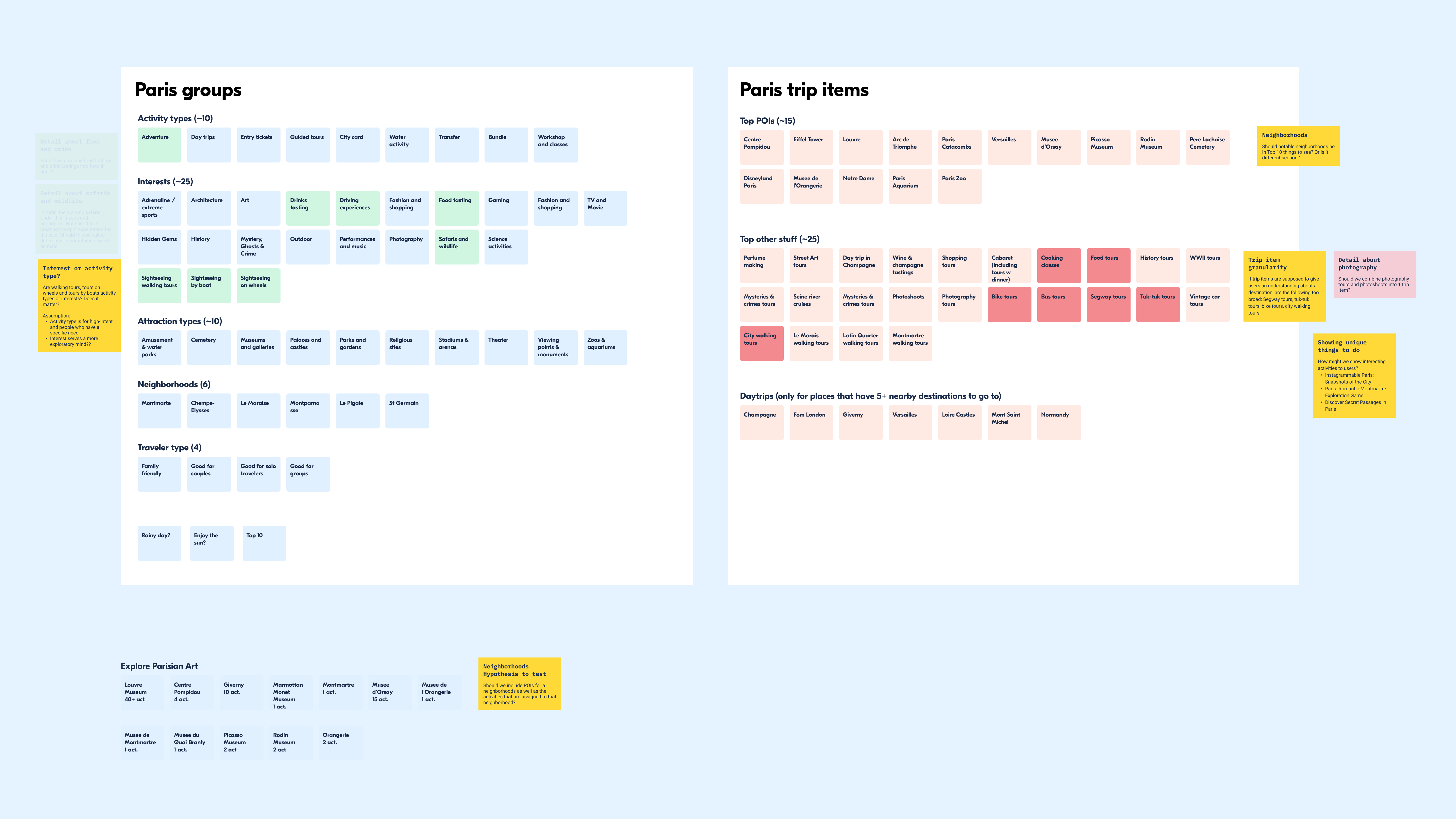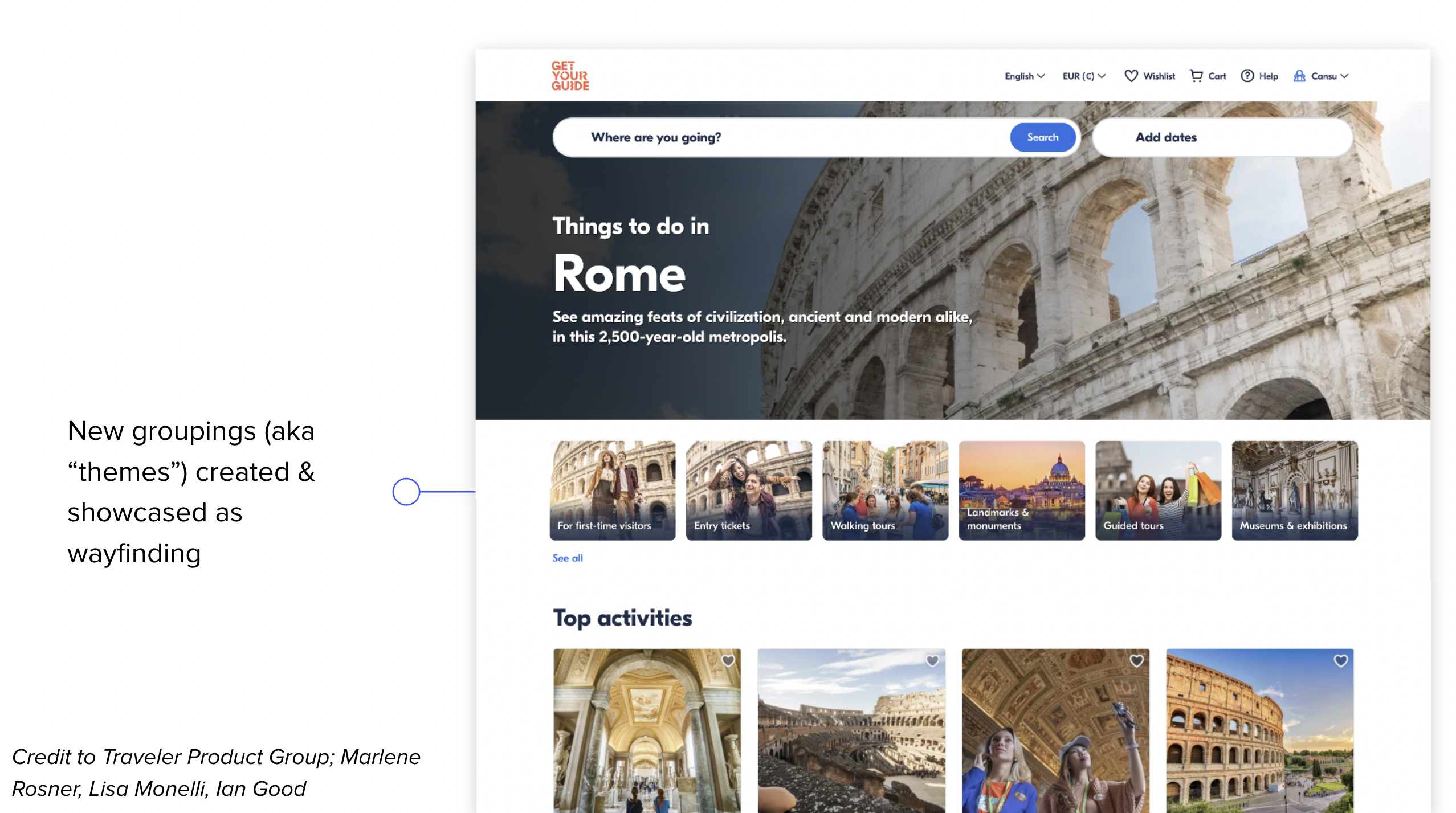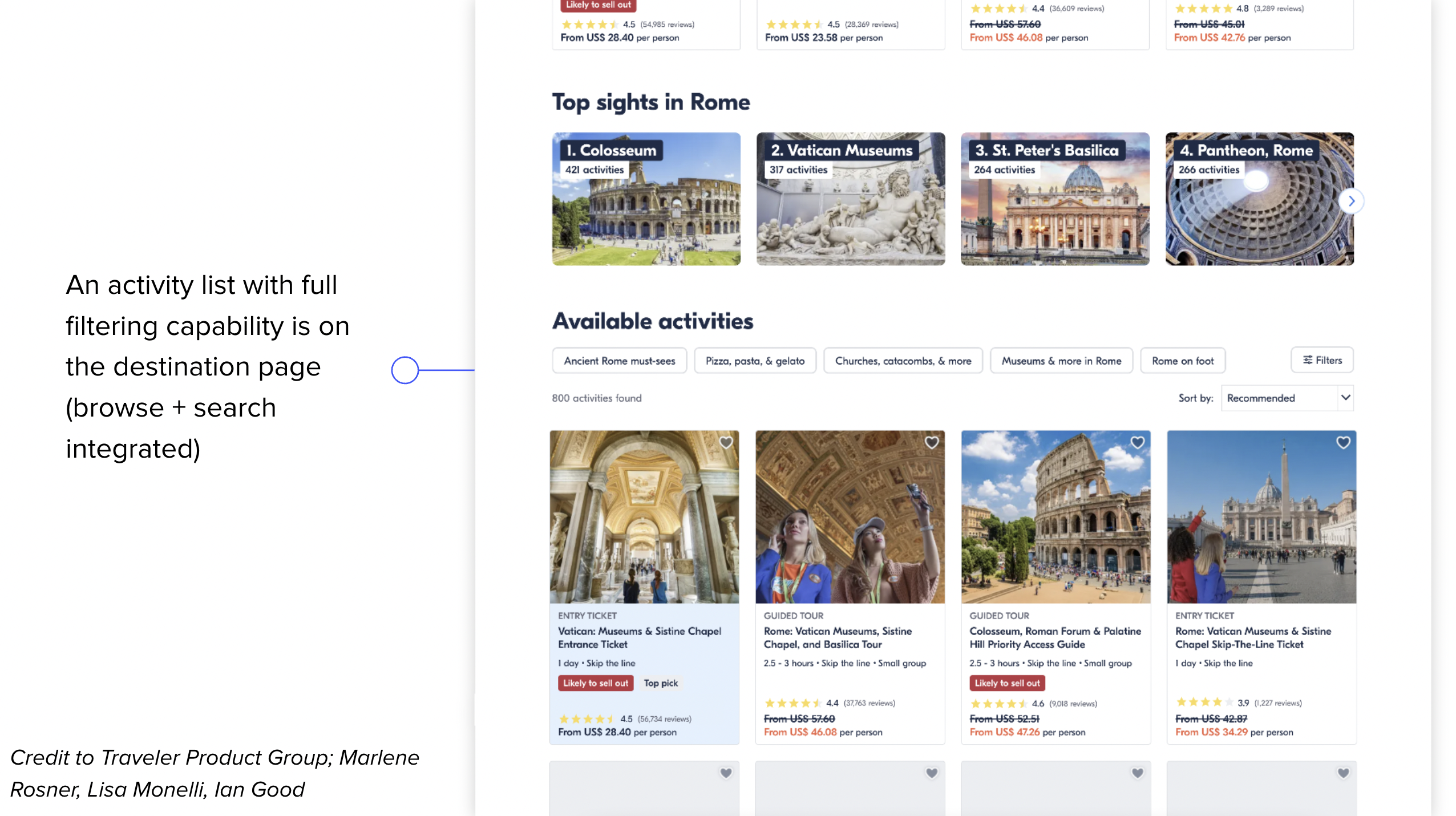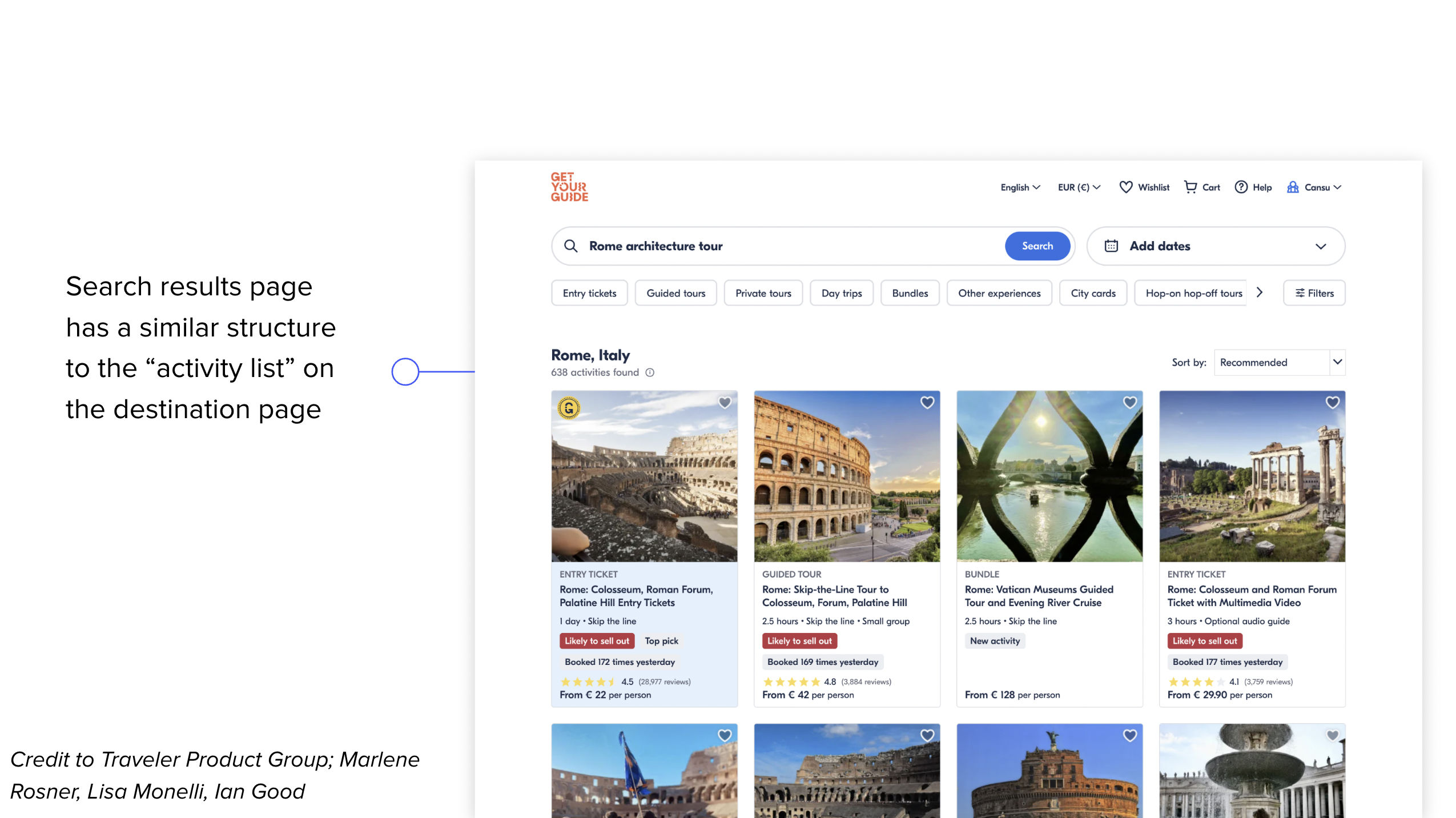At the end of 2021, GetYourGuide had launched and scaled an updated version of city discovery pages for travelers who were still researching things to do in a destination. We had built an infrastructure enabling us to group activities in “collections” and showcase city-specific collections to help travelers understand the unique and key experiences a city had to offer.
We now wanted to create a holistic user journey and a mid-term vision for destination discovery on our platform. The goal was not only to inform product strategy but also guide organizational structure and team ownerships.
I was part of the leadership team that developed the initial direction for the project and shared it with our CEO. We then collaborated with our teams to align on principles, a clear but rough vision, and next steps for our teams to work together.
When we set up the teams and their ownerships based on this, I worked closely with a product designer and researcher to answer some of our key high-risk and foundational questions.
Project method
Rough vision creation, team alignment, exploratory research, concept testing
Date
December 2022 – March 2023
Team
CPO, 2 Product directors, 2 PMs, 2 Product Designers, Content Designer, Merchandizing Lead, Researcher
Our goal
Develop a mid-term vision to create a clear direction for our product strategy and inform our organizational structure / team ownerships.
Why now?
The user journey had become disjointed and reflected our organizational structure. A user landing on a city discovery page wanting to see more activities had to relearn our product on the next page. (different layout, filters, etc.)
The user journey was unintentionally different for users coming from different channels (ie. search engines vs our search bar).
Different teams were tackling the same problems with different directions because there was no aligned direction.
We were now able to categorize and group our inventory in many different ways. We could improve our product to match the traveler’s mental model.
Using vision to create leadership alignment
In November 2021, we gathered a task force with our CPO, 2 Product Directors, and myself to create alignment on the problem space and a rough vision of where to go.
At different points of the process, we presented the work to our CEO to ensure we were going in the right direction. This gave him the opportunity to give feedback and discuss important themes. For example, a key theme for him was to that we presented cities and attractions primarily through activities (and activity groupings) rather than editorial content.
Matching the user mental models
We believed that travelers created a shortlist of experiences (displayed in the first image) rather than specific activities (displayed in the 2nd image) in early travel planning.
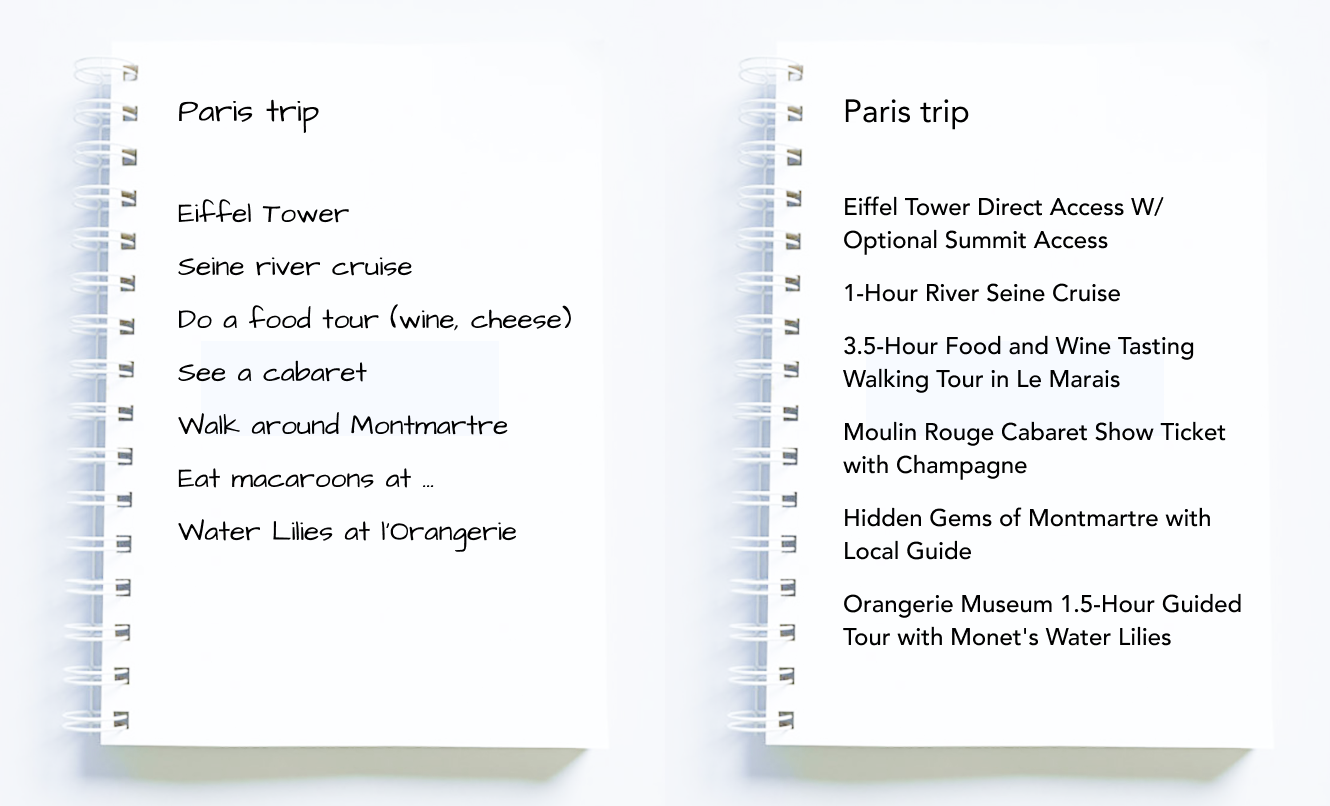
We wanted our product to offer a browsing experience that matched this mental model. If confirmed by user research, we would create “experience” groupings and showcase them on our discovery pages.
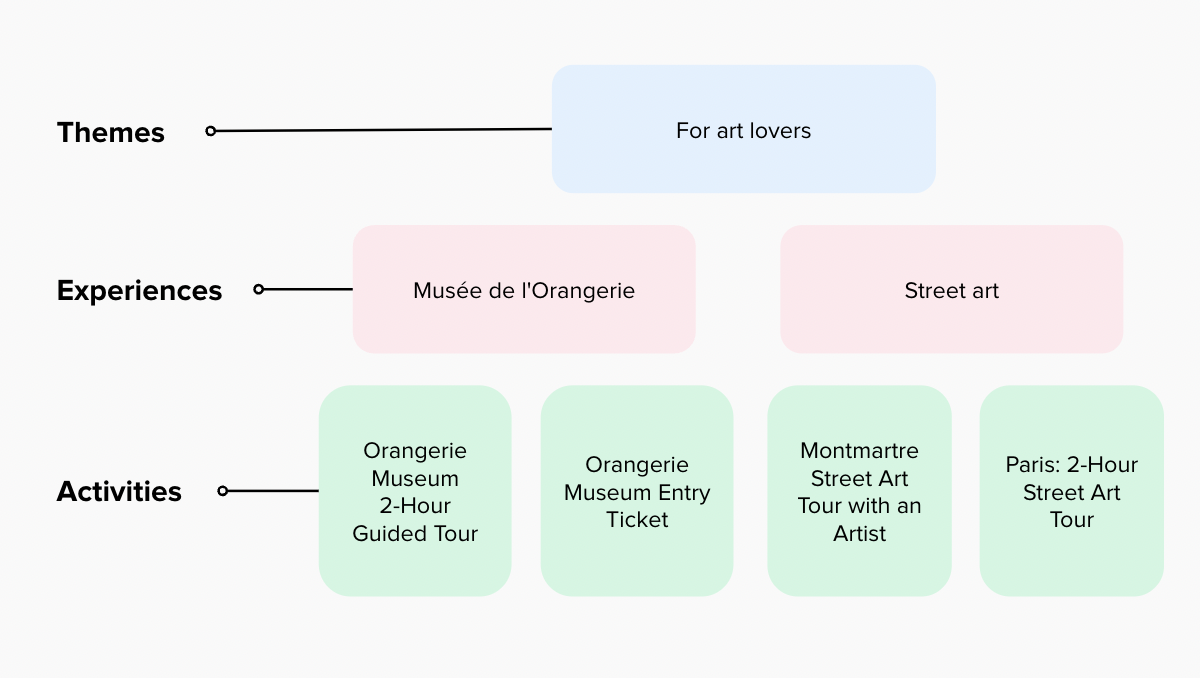
Key ideas in the vision
Working with the teams
With high-level directional thinking created on the leadership level, we got our teams involved. The goal was to get feedback on the definitions and principles, and discuss their ideas on how we can achieve our goals.
A team of 2 product designers, 1 content designer, 2 PMs, and one merchandizing lead ran a design sprint with us as the leadership team coming in and out of the process.
We agreed on the following guidelines:
- Group activities into themes and experiences.
- Surface these groupings based on the user’s context. Broad search would result in higher level groupings.
- Create “opinionated” modules specific to a destination query to guide discovery.
- Work on navigation and create a consistent experience regardless of acquisition channel.
- Everything on our website should be searchable and return the optimum landing experience.
We noted down follow-up questions:
- How do travelers go from deciding on a destination to go to deciding on things to do and booking them?
- Do we need to have 2 separate discovery experiences? (one based on guided browsing and one fully user-controlled search)
- We had defined two hierarchies: themes and experiences. Does this hierarchical grouping resonate with users? If so, how should we create these groups to match how users think?
Research
We worked with an external agency that conducted 30 diary studies and 12 in-depth interviews with people from the US and Germany who fit our target audience. The in-depth interviews were done in 2 sections: exploratory research to understand traveler planning behaviors and concept testing.
Part of my role was to onboard our new product designer and collaborate with her on concept creation. We did a few design jams to define our primary research questions and 2 concepts that would help us answer them.
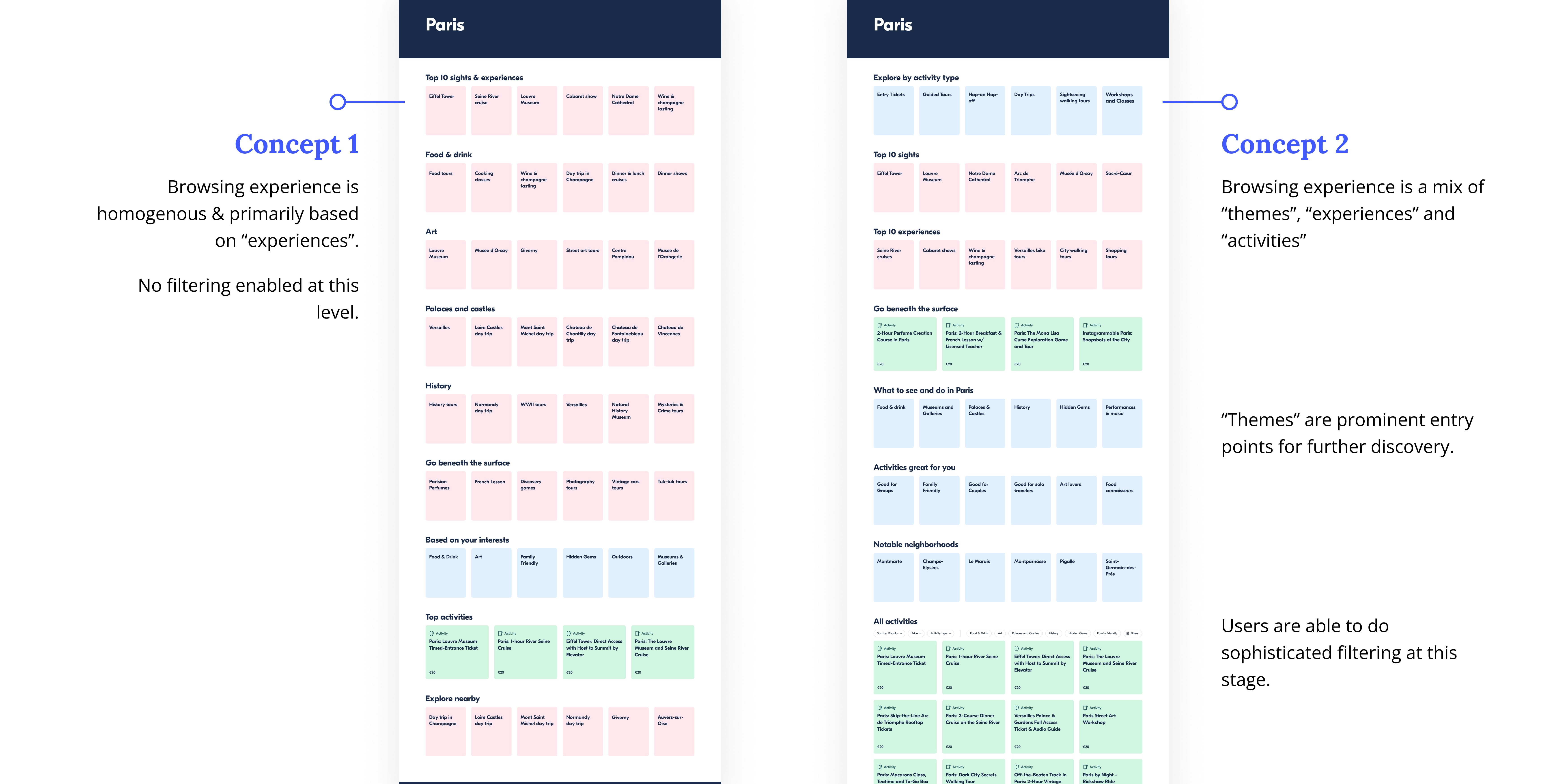
Research findings
The research gave our organization frameworks and common language to make decisions and move forward with some of the core ideas. Some of the more concrete concept test findings are as following:
- The way we grouped our inventory resonates with users. This means that we can create groupings at two hierarchical levels, based on interest, type of activity, type of attraction, etc. as we had planned.
- People prefer to browse through higher-level themes to guide them to understand a destination (Unless they have a specific idea of what they want to do)
- People separate attractions from non-attraction experiences (ie. Eiffel Tower vs Wine & Cheese Tasting). Both are seen as important.
- Even in early discovery, people like the option to have controls over the result set they see (ie. with the usage of filters). We don’t need to create a completely different journey for this.
Next steps
As research was synthesized, our teams started working on the foundational parts of the solution, so we could start A/B testing them. One of the most important foundational pieces was to start creating groupings of activities in a scalable way for us to surface them in our product.
In March 2022, organizational changes meant that our product group shifted focus onto a different strategic initiative. GetYourGuide consolidated all work around search and discovery into one product group. At the beginning of 2023, many of the core ideas from the vision have been tested and launched in our product (under a different leadership team).
As of 2023, some key features we have launched with success are
#1 creating new groupings (aka “themes”) & showcasing them to guide users,
#2 merging filtering & browsing into one experience
#3 creating consistency between discovery pages and search results pages (ie. layout, filters)
Key takeaways
Why do a “vision”?
#1 A high-level vision acts as a communication and alignment tool. It can also build trust with executives (as was in our case with our CEO).
#2 A holistic vision enables teams within an organization to realign and move together towards a cohesive experience.
Ways of working
#3 As a leadership team, there is a fine-balance of creating direction for teams vs telling teams what to do. When leadership creates too detailed vision, it can be the latter, which demotivates teams.
#4 When creating a vision for alignment, most time should be spent on discussing principles and context. The solution direction should be created as a team.
Leadership
#5 Maturity and leadership sometimes means letting go of projects we are personally invested in for the interest of the organization.
